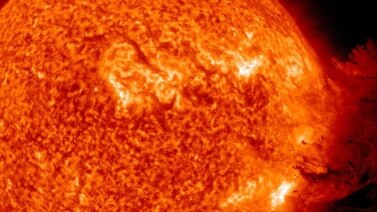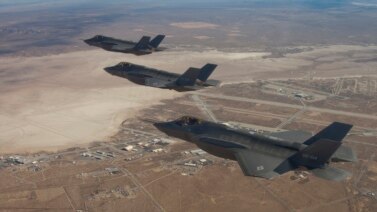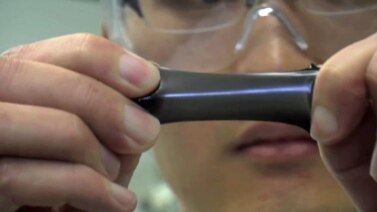Experts estimate that one out of every five fish sold was caught illegally. They say the illegal fishing market is worth $23.5 billion a year. It threatens food security and hurts the environment.
Officials are using new observational technology to fight illegal fishing.
“Hello to everybody. Thank you for taking the time to join us here in Harwell (UK) in the Operations Center to what we call ‘Project Eyes on the Seas.’”
That is Tony Long. He leads the Ending Illegal Fishing program for Pew Charitable Trusts. The group created Project Eyes on the Seas. Large three-dimensional images of a globe can be seen on a video that plays behind him.
“It looks different from what you might expect because this globe only shows you the vessels (boats) that are coming into this system from a live automated information system or AIS.”
The screen shows there are 120,000 fishing boats that have AIS. They are required to have the technology. But those who are fishing illegally often turn it off. The technology does not tell observers when that happens. Project Eyes on the Seas combines satellite information with secret government records on every ship’s past activities.
“The same system the fishing vessels use to predict where the fish are going to be, we can bring that environmental source into this data.”
Mr. Long says that permits investigators to understand exactly where the fishing boats are operating.
The Pew team gives the information it gathers to port officials to help them decide if they should take action against a ship.
Tony Long says he would like to be able to provide port officials all over the world with clear lists. They would inform the officials about ships to inspect, ships to bar from entrance, and ships to permit entrance for trade activities.
The Pacific island nation of Palau was an early user of the technology. Palau has one of the richest fishing areas in the world, and wants to protect it. Last year, it announced a plan to ban commercial fishing in a 630,000 square kilometer area.
K.B. Sakuma is a special adviser to the president of Palau. He says Palau is trying to deal with a recent increase in illegal, unsupervised and unreported fishing.
“And it’s come to a head in the last year or two, where [from] our southern island in the evening you can see on the horizon just dotted lights of these illegal fishermen that come into our waters, fill their holds with our fish, our resources, our food security…”
Mr. Sakuma hopes the information from the project will help Palau fight fishing piracy.
Project Eyes on the Seas is also watching waters near Easter Island in Chile.
Tony Long expects that the system will support fisheries and markets that want to guarantee their products are gathered legally.
I’m Marsha James.
VOA Science Correspondent Rosanne Skirble reported this story from Washington. Christopher Cruise wrote this story in VOA Learning English. Caty Weaver edited the story.
Words in This Story
globe – n. an object that is shaped like a large ball with a map of the world on it
automated – adj. to be operated by machine, computer, etc., instead of by humans
data – n. facts or information used usually to calculate, analyze, or plan something
commercial – adj. related to or used in the buying and selling of goods and services
come to a head – idiom to reach a critical point
Does illegal fishing happen in your country’s waters? If so, what, if anything, is your country doing to stop it? We want to hear from you. Write your thoughts in the comments section.





